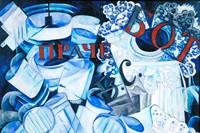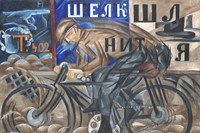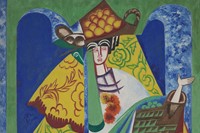As a long overdue retrospective arrives at Tate Modern, everything you need to know about Natalia Goncharova, the leading female voice of Russia’s avant-garde
For almost 50 years Natalia Goncharova’s Still Life with Teapot and Oranges – which sold at Christie’s in 2017 for 2.4 million dollars; previous works by Goncharova sold for record-breaking prices at auction a decade earlier – was believed to have been painted by her lifelong partner, creative collaborator and champion, Mikhail Larionov. Extensive research proved this was not the case, and called Goncharova’s often under-appreciated contribution to the Russian avant-garde into question.
Now, a new retrospective of Goncharova’s work at Tate Modern presents her life and career independent of her partner, in her rightful position as the foremost voice of the early 20th-century Russian art. While many associate the avant-garde with strident shapes, dynamic typography and, of course, Kazimir Malevich’s iconic Black Square of 1915, its roots are softer and more romantic, fusing folk influences from Russia’s Slavic past with the rising tide of Modernism that had spilled over from Europe.
At a time when huge strides were being made in the artistic communities of both Europe and Russia, and as dramatic social and political changes were ongoing around them, Goncharova stood as a woman driving forward a movement that defined 20th-century art. With ‘Mother Russia’ itself upheld as female in type, Goncharova is arguably the country’s most important female artist. Her remarkable, yet relatively unknown achievements outside of Russia, are marked out in Tate Modern’s pioneering retrospective.
Here, in celebration, five seminal moments from Goncharova’s career.
1. Her first solo exhibition in 1913 found her national acclaim
The year 1913 marked Goncharova’s emergence into the avant-garde movement, and of the avant-garde itself finding prominence in Russian culture. Having continued to higher education – already an unusual move for a woman in Russia at this time – Goncharova presented a colossal 800 works in a solo show four years after withdrawing from the Moscow School of Painting, Sculpture and Architecture on account of a number of ‘leftist’ students being expelled for producing works akin to the European Modernist style. The exhibition opened new channels and new perspectives and for Goncharova placed her at the very heart of Modernism in Russia. Gaining national acclaim following the show, she became a major determining factor in the recognition of the avant-garde as a whole – ahead of her male contemporaries like Marc Chagall, Wassily Kandinsky and Pavel Filonov, who today we identify more readily with the avant-garde than Goncharova herself.
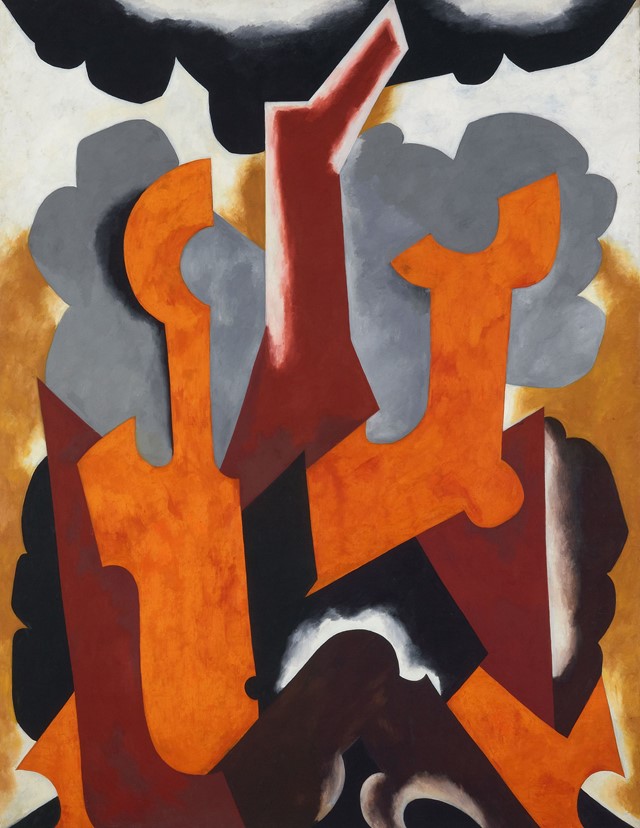
2. She got arrested for her work
Goncharova regularly depicted subjects traditionally considered a man’s domain – namely, the female nude and religious scenes. Such controversial and challenging behaviour saw her prosecuted and tried on a number of occasions for blasphemy and pornography. Furthermore, Goncharova’s choice to depict religious scenes in a secular aesthetic was, in a country heavily under the influence of the Orthdox Church, a brave choice that demonstrated her lack of inhibition when it came to gender: the much-respected practice of icon painting was reserved for the stroke of a man’s brush, not yet that of a woman (and least of all Goncharova as Russia’s matriarch of Modernism).
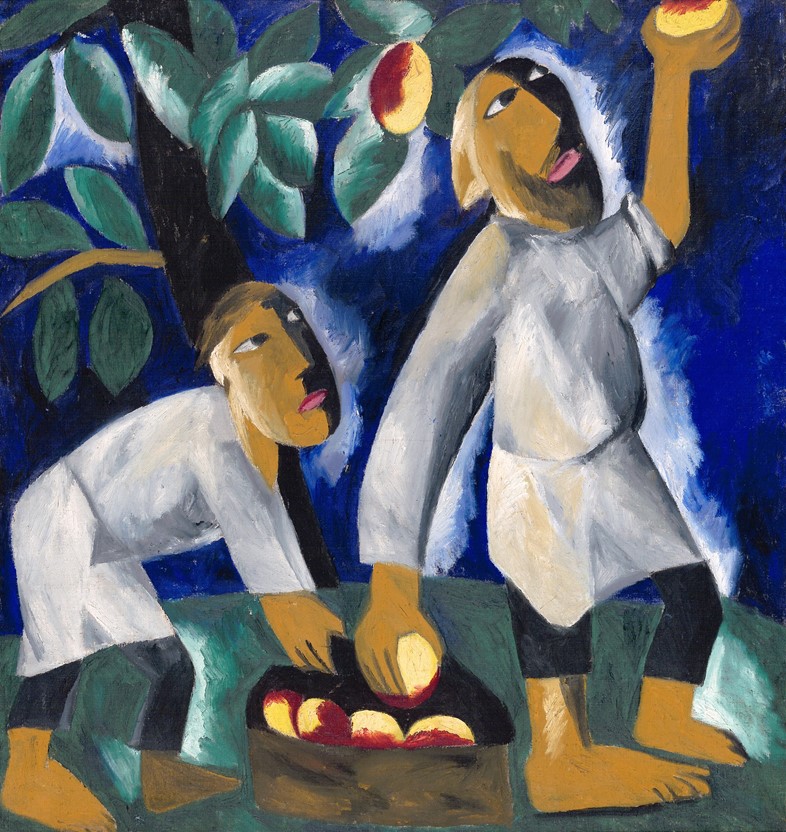
3. She played a big part in the movement’s radical exhibitions
In being Russia’s most prominent female artist and at the forefront at the avant-garde (along with the contributions of fellow women artists Lyubov Popova and Olga Rozanova), Goncharova took up roles that saw her stand alongside her male peers, becoming a pivotal part of the group’s dynamic path. Characteristic to their approach were the progressive means by which the group’s work was shown. The radical and independent exhibitions Jack of Diamonds (1911), Donkey’s Tail (1912) and Target (1913) were fundamental components that first outlined a break with the traditions of European Modernism. At this time, alongside Larionov, Goncharova developed Rayonism, a movement that emerged from Cubism and Futurism and that was concerned with the progressive idea that the eye does not see objects, only the rays emitting from them. It was a style the artist continued to develop until 1956, though she refused to adhere to one single school of thought, and nor did she mark out her allegiance or ownership to a single movement, traits that some have deemed her downfall when it comes to recognition within one movement.
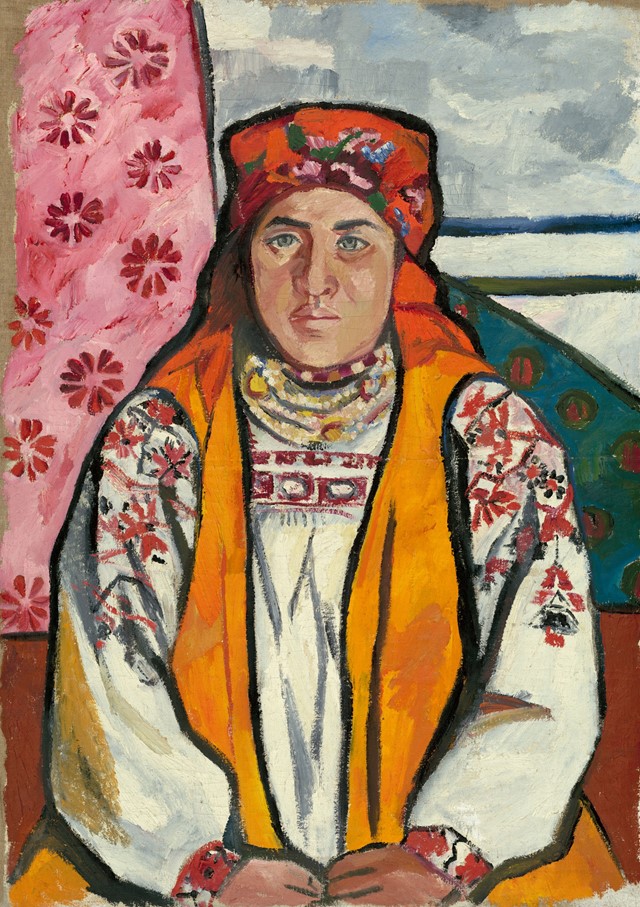
4. She combined ‘high’ and ‘low’ art
The freedom of her approach saw Goncharova place experimentation first and foremost. She employed several methods of creative practice and followed an eclectic agenda that committed to no one school. Inspired by this, and in response to her 1913 exhibition, Larionov and the writer and artist Ilia Zdanevich theorised ‘Everythingism’ (vsechestvo) in appreciation of Goncharova’s unique attitude. She combined the high and low arts, and elevated everyday practices. Her multifaceted style adopted textile, theatre, interior, book design, costume, and posters, alongside painting. She took practices that were deemed female and combined them with genres born of male developments within the arts. Folkish forms and vivid colours span her work, from designs for the Moscow-based fashion designer Nadezhda Lamanova to Diaghilev’s famous stages in Paris.
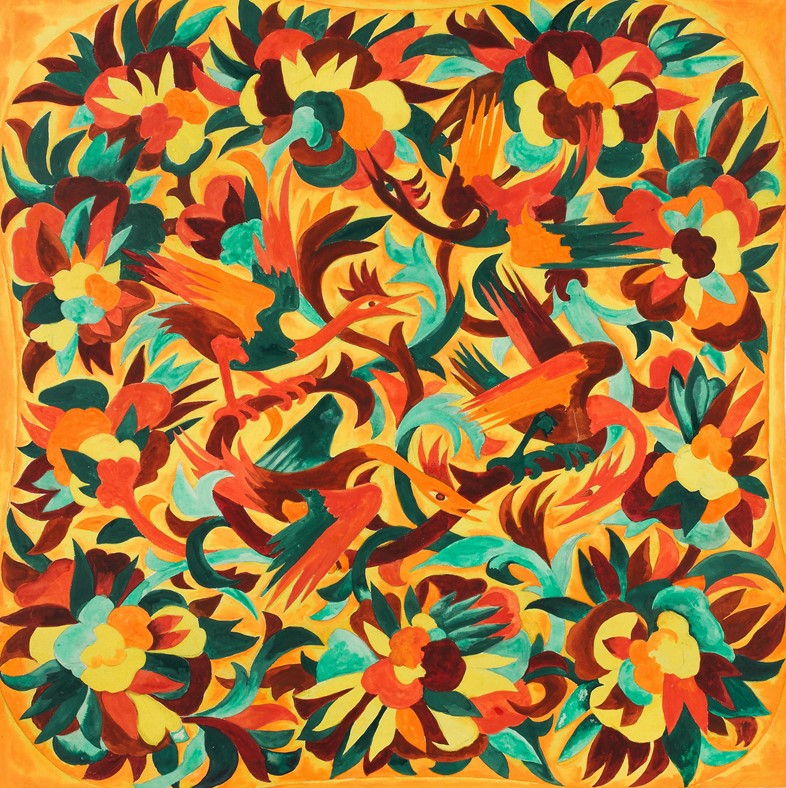
5. Her work propositioned a new take on beauty
Goncharova deconstructed the classical formulation of ‘beauty’ and replaced it with that of the primordial. This rough and uneven femininity was at the heart of what her homeland had come to romantically uphold in the earthly female peasant, and as a symbol of the elusive Russian soul. Goncharova’s heavy-handed, unadorned lines and stylised primitive blocks stood as a clear example of shift from the classical in portraiture and of the innovations of the avant-garde. Her new female aesthetic and the subsequent development of Neo-Primitivism were some of the earliest to ignite the avant-garde in Russia. And while beauty was considered of lesser concern for the male artist, her honest depictions are again unique to her position as a woman within the avant-garde, they remain refreshed and unburned by the male gaze and centuries of canonical beauty. While Malevich shocked with his ardent Black Square, it was Goncharova’s subtlety and variety at the very beginning of the avant-garde, and as a forerunner for Suprematism, Constructivism and Cubo-Futurism, that the Tate Modern honours today.
Natalia Goncharova 1881–1962 is on at Tate Modern, London until September 8, 2019.

